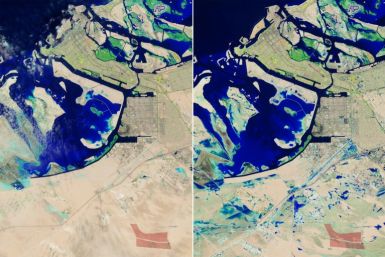NASA Space Telescope Captures New Photo Of 'Pillars Of Creation'
NASA released a new image of the "Pillars of Creation." The iconic image was taken from the Hubble Space Telescope.
It was a part of the celebration of Hubble's 25th anniversary of capturing space images. The image is of an iconic deep-space object captured by Hubble 20 years ago. This time, scientists pointed the telescope at the Eagle Nebula aka Messier 16 (M16) and captured a wider and sharper view of the celebrated "Pillars of Creation." The improved version of the photo was possible because of the upgrade Hubble has gone through over the last 25 years. Extremely finer details of the Pillars of Creation can also be seen in a new video of the Hubble views.
Paul Scowen from Arizona State University said that the image is also a demonstration of how far Hubble had evolved in its observation in the past 25 years. He was speaking at a news conference at the 225th meeting of the American Astronomical Society on Monday, Jan. 5. "The pillars themselves become quite transparent in the infrared," Space.com quotes Scowen. He was one of the astronomers who helped capture the original iconic image. The Eagle Nebula, named as the "Pillars of Creation" in 1995 after its discovery, is arguably the most renowned of all the images Hubble has captured so far. The image has been used on pillows, T-shirts and postage stamps. The "Pillars of Creation," located around 7,000 light-years from the sun, is a region of dust and gas where stars form at a rapid clip.
The new image is the result of using the Wide Field Camera 3 which was installed in 2009. It gives a resolution which is double the one in the original instrument. The original image was captured with the Planetary Camera 2 and by the Wide Field. There are different colours in the image to represent certain elements. Green reveals hydrogen, red shows ionised sulphur and blue highlights double-ionised oxygen. The infrared photograph shows that the iconic pillars are still there even after two decades. Gas between the columns, however, evaporated long ago due to the heat from bright young stars.
Contact the writer: s.mukhopadhyay@IBTimes.com.au






